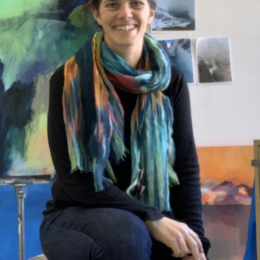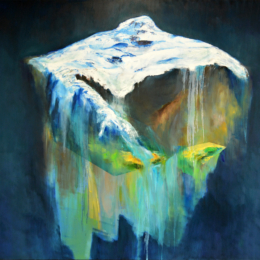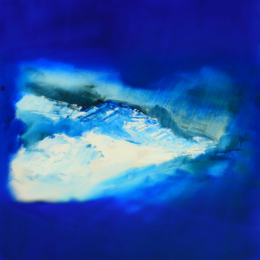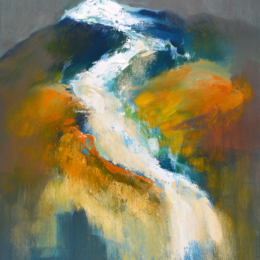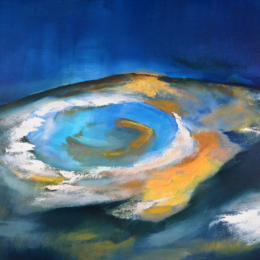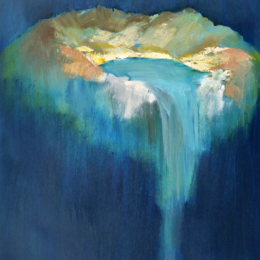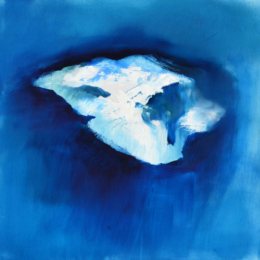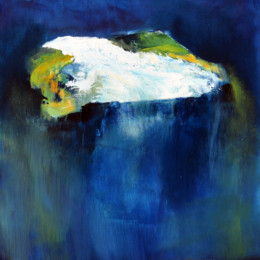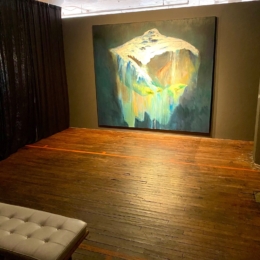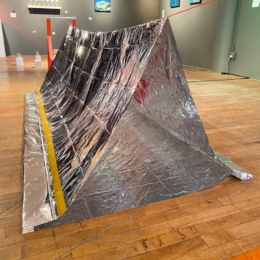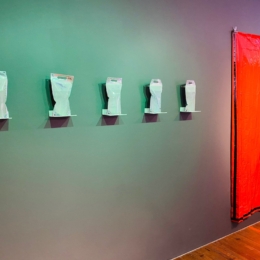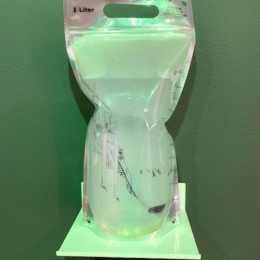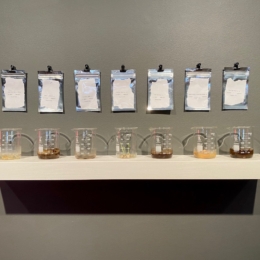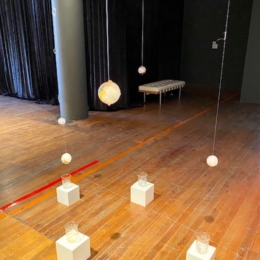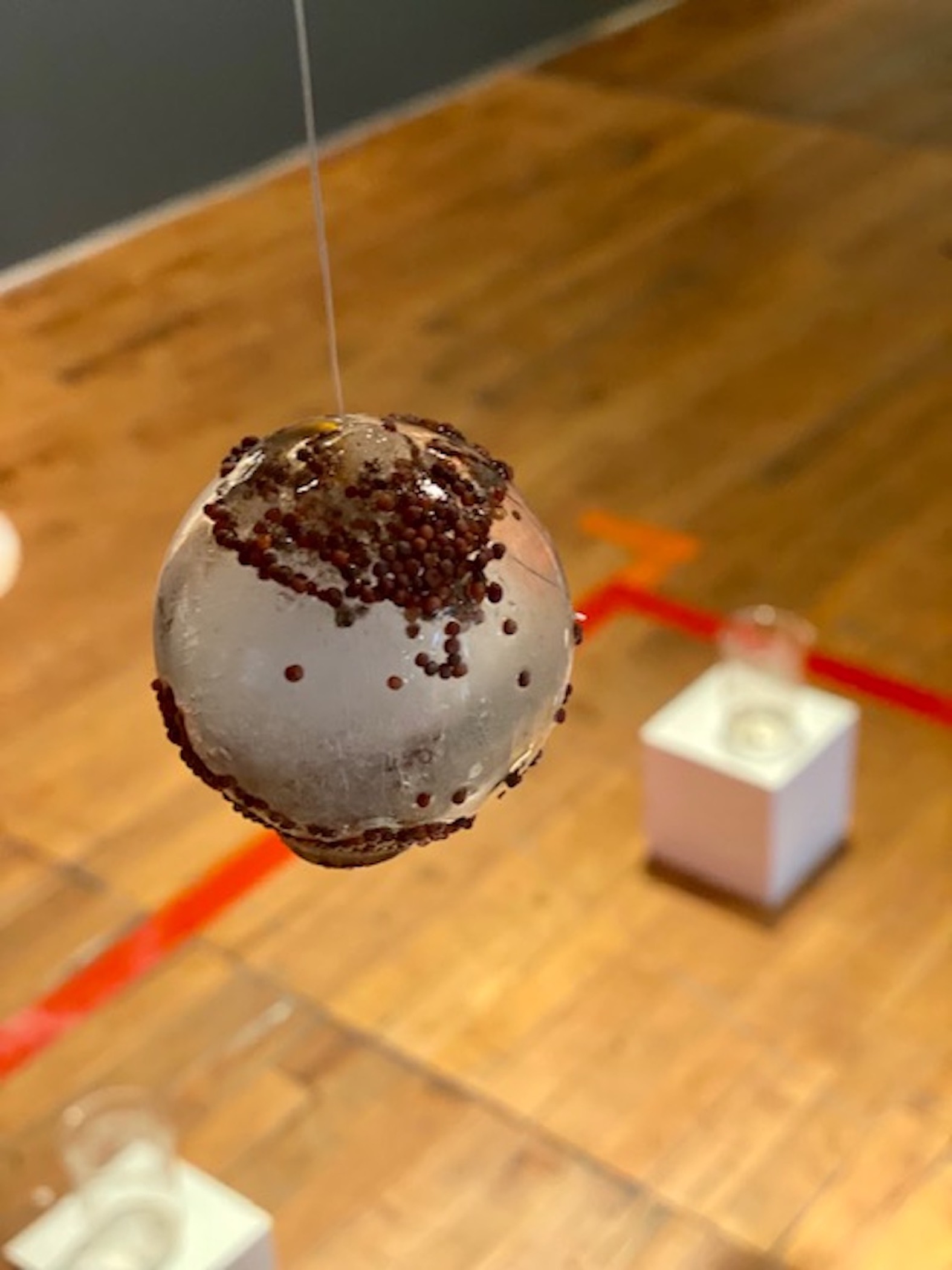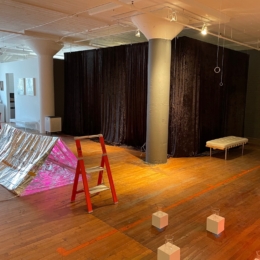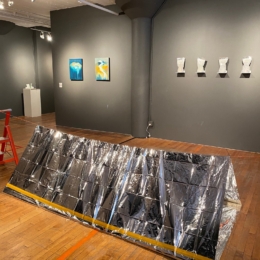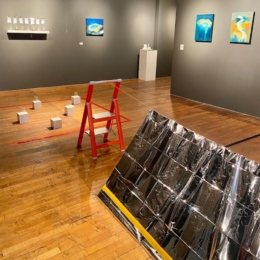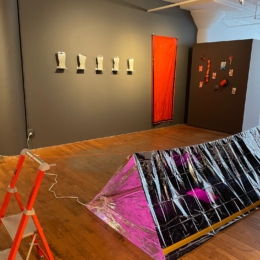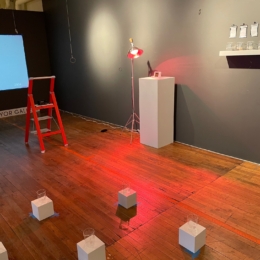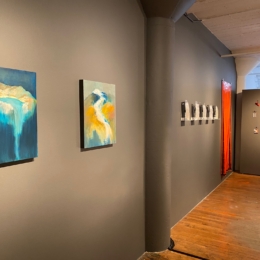About the Artist
Betsy has systematically shifted the focus of her work to intentionally address climate change through visual representations of ice since her sabbatical research in 2017-2018 of glaciers in Glacier National Park. She is drawn specifically to disappearing glaciers for two reasons. One, glaciers are sensitive indicators to climate change due to their isolated nature. Two, the landscape of glaciers has historically been connected to the human experience of the sublime in nature and art.
The Project Space Grant has enabled Betsy to move from two-dimensional painting to installation-based work as she has developed a of a full-scale gallery installation inspired by glacial loss due to climate change. The exhibition. entitled, Scaffold, is a multi-sensory, multi-media manifestation of Betsy’s alpine and equatorial glacial experiences and the global realities related to climate change.
For several years, Byers has accompanied scientists on trips to various glaciers, hiked the Aletsch Glacier in the Swiss Alps, and observed how glacier tourism now requires bridges and ladders to reach receding and melting glaciers.
“Many people’s experiences of arctic, alpine, and tropical glaciers (often located on equatorial volcanoes) are through screens, and through the speed of social media,” Betsy says. “In this exhibition, through which I’ve been processing my experiences, I hope to create contemplative, sensory spaces people can step into and come to an embodied understanding of what’s happening in our world.”
Betsy continues, “The work within Scaffold, is visually anchored in the aesthetic of survival gear—colors like bright orange and metallic reflectives—and the language of temporary solutions and adaptations.” Elements include a survival tent, a soundscape created from heartbeats heard via a digital stethoscope, paintings, and an olfactory piece. “Smell is so connected to brain function. My goal is to create an interactive space that engages the senses and creates physical lasting memories of the exhibition.”
Betsy also wants viewers to consider concepts such as time and change, the temporary, and ideas of survival. “The earth is reacting to climate change in survival mode, and we are slow to act. I hope to create a space in which people can contemplate this and let the elements of installation affect them physically.”
Betsy chose to study art “because art classes challenged me more than anything else.” After earning a Bachelor of Arts degree with a major in studio art from St. Olaf College, she was awarded a Master of Fine Arts from the Minneapolis College of Art and Design. She shares her love and enthusiasm for making art with students as an Associate Professor at Gustavus Adolphus College. Her work has been exhibited at numerous venues both nationally and internationally, such as. PULSE Miami Beach 2019, SCOPE New York 2017, the Minnesota Museum of American Art in St. Paul, DeVos Art Museum at Northern Michigan University, Hillstrom Museum of Art at Gustavus Adolphus College, Intermedia Arts in Minneapolis, Guilford Art Center in Guilford, Connecticut; The Soap Factory in Minneapolis, The Institute Gallery in Sogndal, Norway; and the National Galleries of Scotland. Her work resides in several private, corporate, and museum collections including the Weisman Art Museum, Hillstrom Museum of Art, Target Corporation, Nordstrom Corporation, BMO Harris Bank, LPM Corporation, and Allina Health Center.
Please email Betsy at [email protected] if you would like more information about glaciers and climate change.
